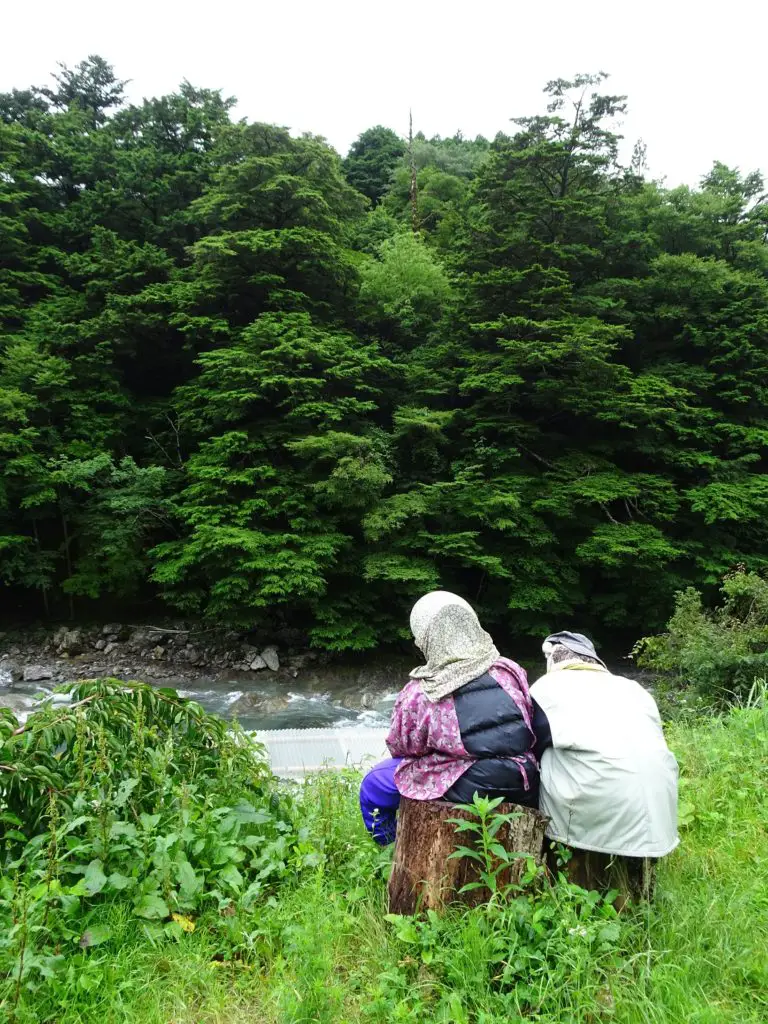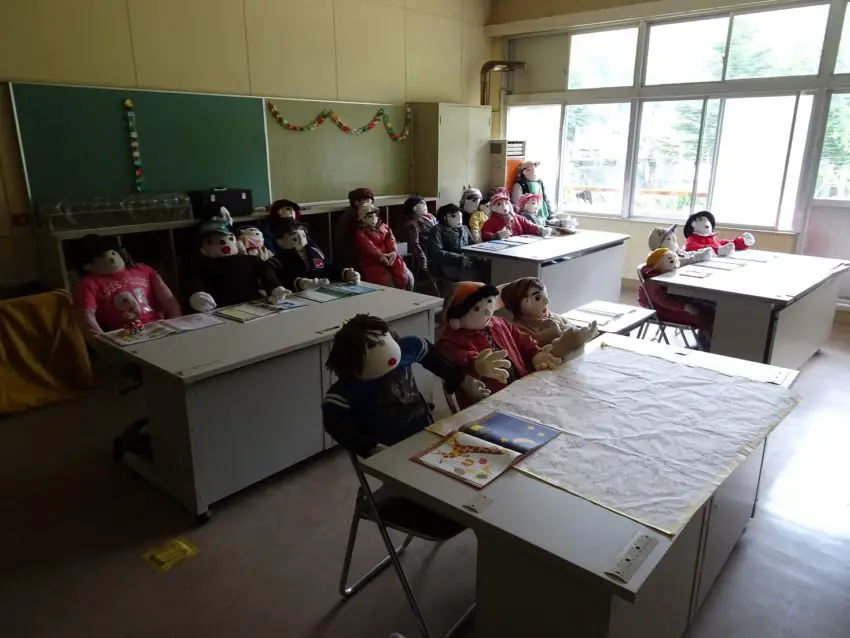Japan certainly has its share of weird and wonderful sights, but we didn’t come across a more unusual place than Nagoro, a small mountain village populated by nearly life-sized dolls. Sitting in the secluded Iya Valley, it’s a wonderfully offbeat place to explore and one that should be on every Shikoku itinerary.
Our visit to Nagoro was one of our personal highlights during our visit to Shikoku, and an experience we likely won’t forget anytime soon. Check out this post for everything you need to know about visiting this unique place.
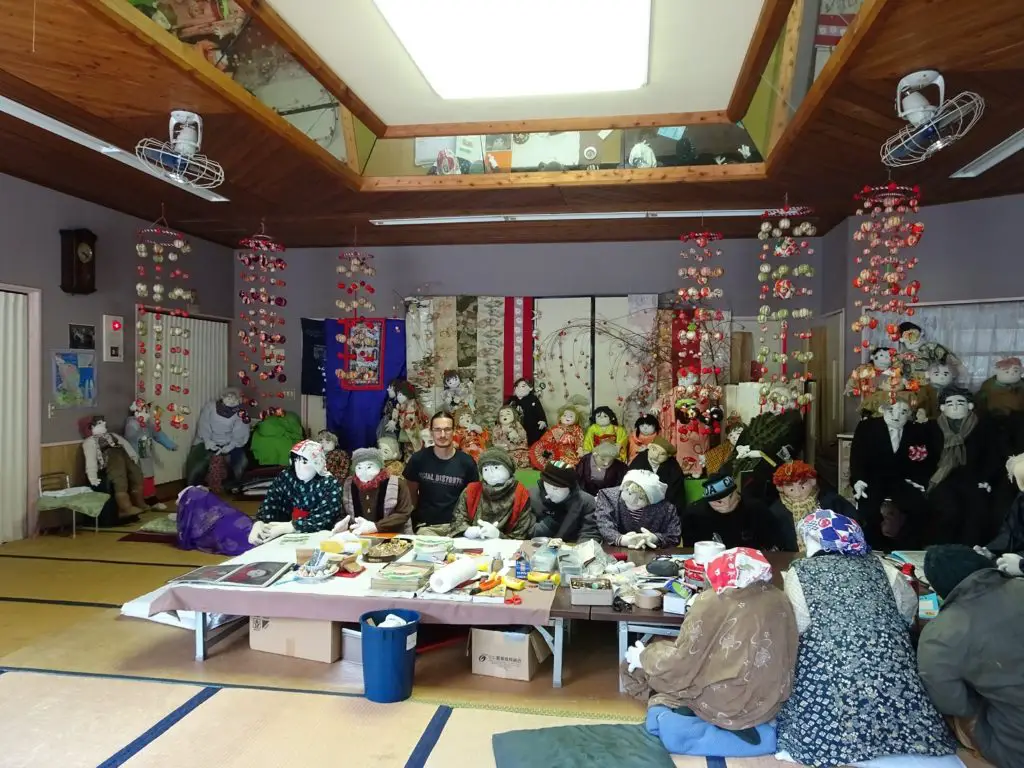
This post may contain affiliate links, and I might earn a small commission at no additional cost to you. For more info, click here.
What is the Story Behind Nagoro Doll Village?
Nagoro, a tiny village in Shikoku’s secluded Iya Valley used to have about 300 inhabitants but due to Japan’s decline in population in combination with the advancing urbanization, the numbers dwindled until there were less than 30 people living in the village, making it more or less of a ghost town.
At some point, local artist Tsukimi Ayano decided to replace people who had died or moved away by puppets sporting their likeness. Neighbors picked up the idea, and soon every corner of Nagoro was populated by nearly life-sized dolls.
While a lot of them are still based on former inhabitants of the village, fictitious puppets have been added to the mix as well. By 2022 there are over 350 dolls in Nagoro, with new ones being constantly added. Locally, Nagoro is interchangeably known as Doll Village or Scarecrow Village (Kakashi-no-sato).
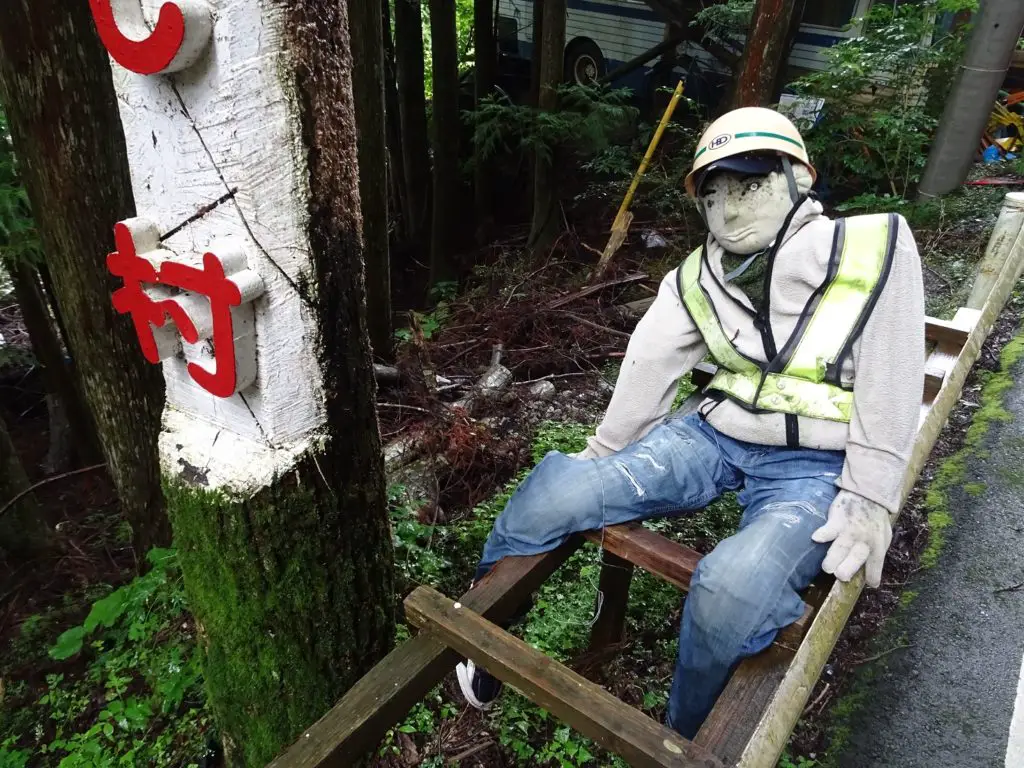
Where is Nagoro Doll Village Located and How to Get There?
Nagoro is located in the eastern part of the beautiful Iya Valley on Shikoku Island. This area is rather remote and would be most easily explored by car. That said, Japan is a great country when it comes to public transportation (and otherwise:-) and it’s very possible to visit the area by a combination of train and bus. We did it that way and with a bit of pre-planning it’s very doable.
The town of Oboke, at the western end of the Iya Valley can be reached by JR train from Kochi to the South (about 50 mins./1,300¥) and Takamatsu (about 1.5 hours/1,800¥) or Kotohira (about 40 mins./1,100¥) to the North. You might want to consider getting a regional train pass here – They are fantastic value!
Public buses traversing the valley are reliable but a little infrequent, so getting around the area requires a bit of pre-planning. At the time of writing, four buses a day make their way through the valley. To get from Oboke to Nagoro, you’ll have to change buses at Kubo (you won’t have to wait there for long, they’re perfectly timed).
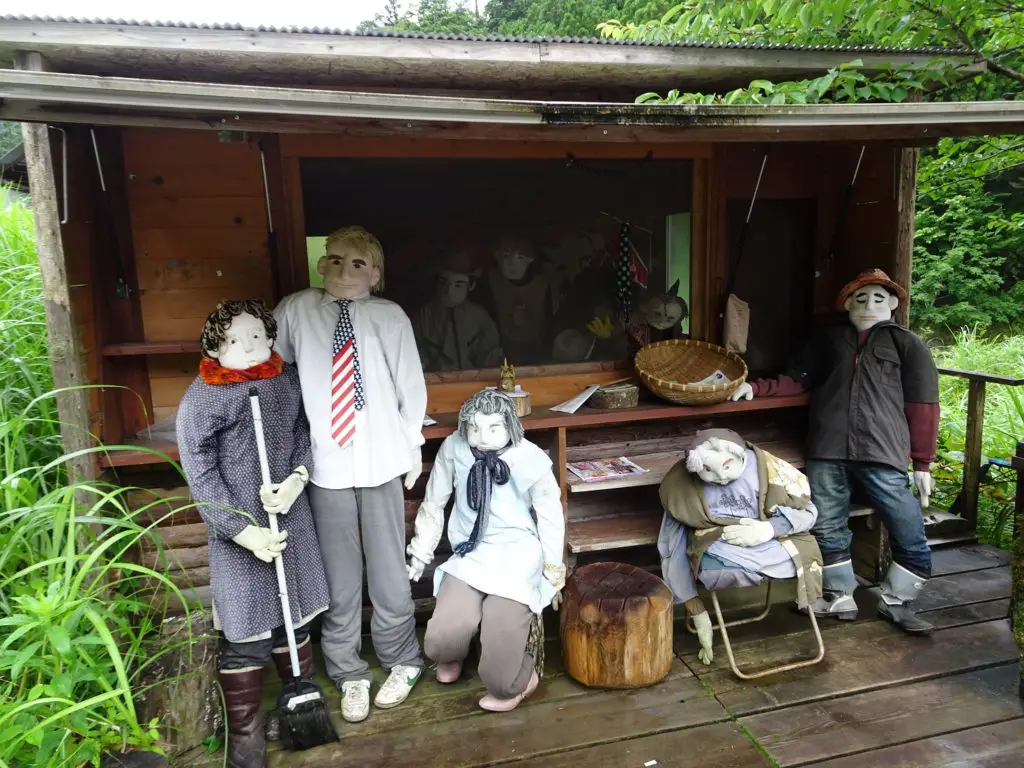
The entire trip takes about 1.5 hours and is a bit pricey at about 2000¥ but think of it as a sightseeing opportunity. Sit on the right side of the bus in the direction of travel and enjoy the wonderful views of the canyon on the way. You can check out the current bus schedules here. Nagoro is referred to as “Scarecrow Village” in the timetable.
Can I Spend the Night in the Doll Village?
So you want to know how unsettling it actually is to spend a night in a village full of dolls, huh? I hear you, I would love to spend a night in Nagoro as well. Unfortunately, we didn’t find any accommodation in the village or nearby, so your best bet is to visit it on a day trip.
We stayed at Yoki Guesthouse in Miyoshi, but at the moment they only seem to rent entire apartments, making it more of a mid-range to top-end option. If you do decide to stay here, you can sleep in the traditional way on mattresses atop the tatami mats on the floor. The guest-house is impeccably run by Usin, who speaks English and is very knowledgeable about the surrounding attractions.
Currently, the most affordable options seem to be Heso Camp or 4S Stay Awaikeda Ekimae in Miyoshi.
Mid-Range and Top-End options are a bit more frequent. One of the most popular ones is Hotel Iya Onsen, sporting beautiful views and warm springs to bathe in. Hotel Kazurabashi near the western vine bridge also famously features open-air baths with a view. You can browse for more options here in the map below.
Visiting Nagoro Village – What to Expect?
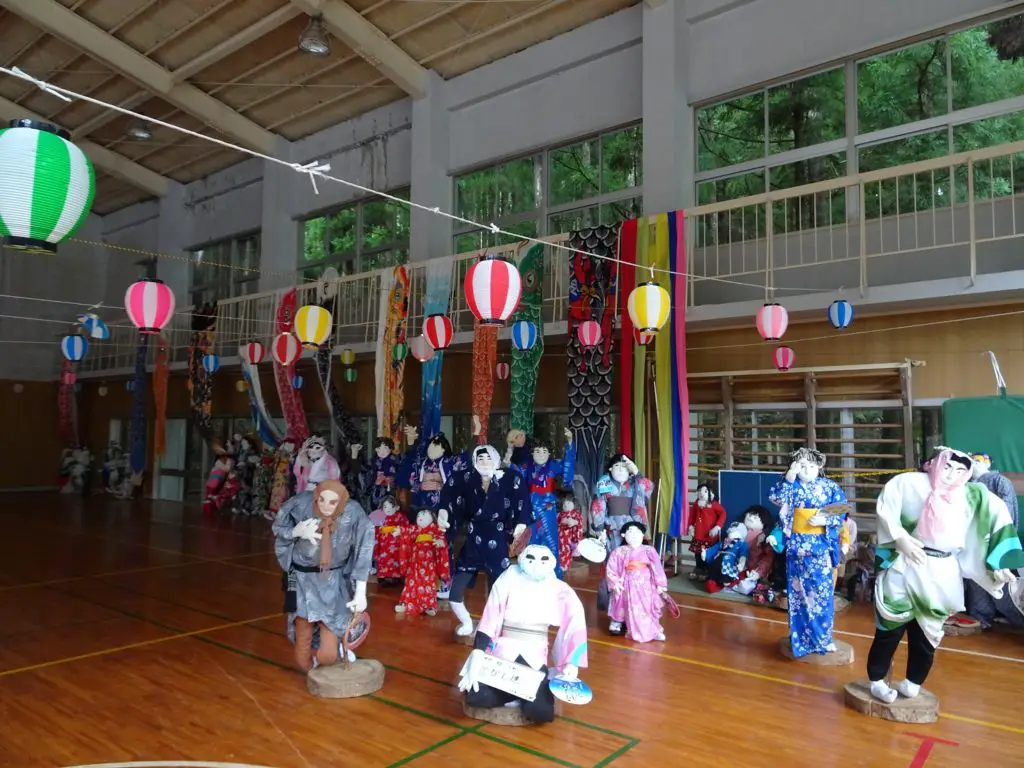
The main part of the fun of visiting Nagoro is to just wander around the village, spotting the puppets in the fields and gardens. They’re really all over the place, including along the main road outside the village. While we were there, we didn’t meet another living soul, which certainly added to the eeriness of the place.
If you want to explore every corner of the village, you should plan about an hour in Nagoro, although you can get a general idea of the place in about 10 to 15 minutes. There are a couple of points of interest:
The village hall contains an especially big group of puppets as well as some leaflets providing information on the history of the place, and the small bus stop at the western end of the village contains figures with the likeness of certain political figures.
The one place you shouldn’t miss is the old school building to the south of the main road, where in lieu of students and teachers you’ll find – you guessed it – tons of puppets. A big bunch of them populates the gym hall to the right of the main school building.
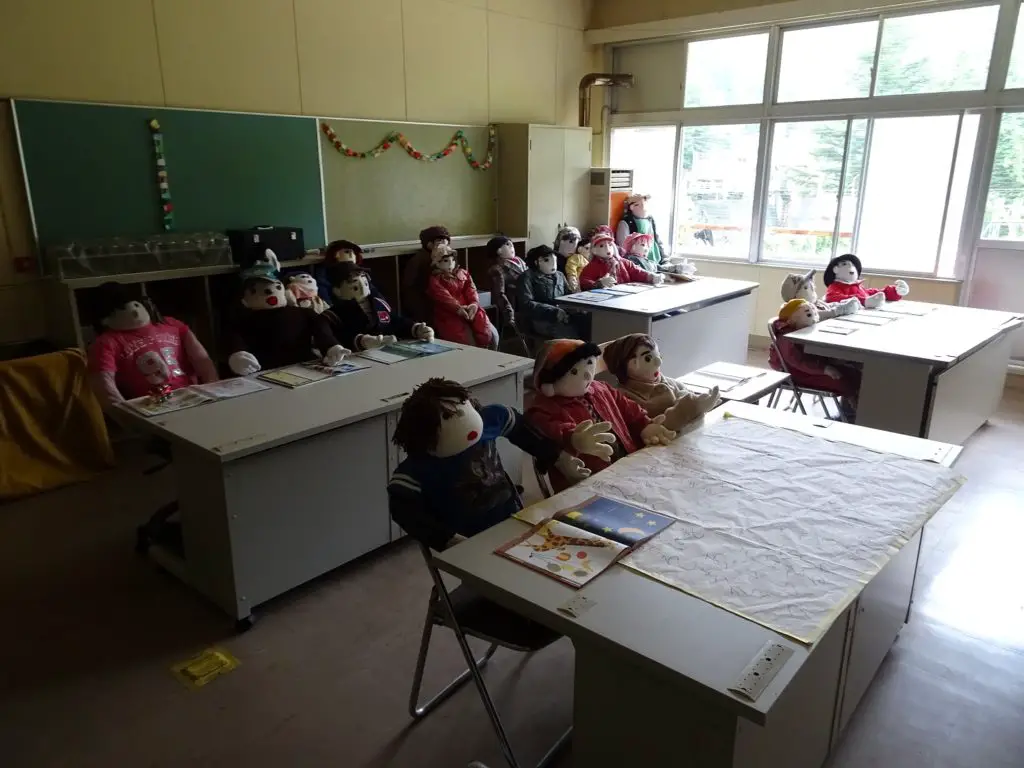
While the door to the gym hall was open, when we were there, the main entrance of the school itself was locked, but if you walk around the back of the building, you might be able to enter the building through the toilets, which were open.
Inside, the scary movie factor increases tenfold, with puppets populating almost every room in the building. There’s a teacher’s lounge as well as three entire classrooms with artificial children sitting at every desk. On one of the chalkboards, someone wrote the fitting question: “Where are the Living?”
Is There an Entrance Fee to Nagoro Doll Village?
Nope – Apart from transport there, visiting Nagoro is completely free!
Other Things to Know about Nagoro
It’s a good idea to combine a visit to Nagoro with the Nizu Kazurabashi Vine Bridges further east or the Oku-Iya Monorail further west. If you want to pack all three into one day (as we did), the infrequent public transport requires some walking along the road or hitch-hiking in between.
If you aim to do that, I suggest you start at the vine bridges (the next stop on the bus after Nagoro coming from the west) and work your way gradually back west.
